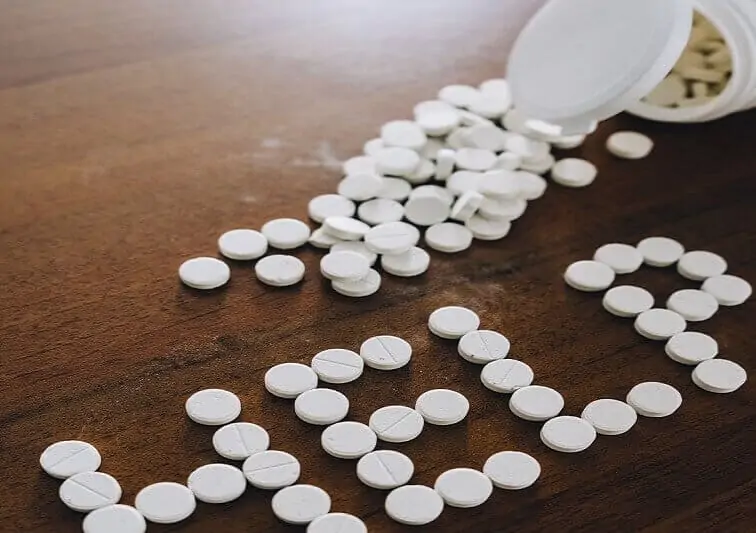Prohibition on Adulteration or Misbranding
The adulteration or misbranding of any health product and the manufacture, importation, exportation, sale, offering for sale, distribution, transfer, non-consumer use, promotion, advertising, or sponsorship of any health product that is adulterated, unregistered or misbranded. Under the law, health products include food, drugs, cosmetics, devices, biologicals, vaccines, in-vitro diagnostic reagents and household/urban hazardous substances and/or a combination of and/or a derivative thereof.
Under pertinent laws, the Director General of the Food and Drugs Administration (FDA) has the duty to issue orders of seizure, to seize and hold in custody any article or articles of food, device, cosmetics, household hazardous substances and health products that is adulterated, counterfeited, misbranded or unregistered, or drug, in-vitro diagnostic reagent, biologicals, and vaccine that is adulterated or misbranded, when introduced into domestic commerce.
What is misbranding?
Misbranding is defined as the misinformation or misleading information on the label or other information materials authorized by the FDA. It shall not refer to copyright, trademark, or other intellectual property-like instruments.
When is a food product considered adulterated?
A food product is adulterated:
(a) (1) If it bears or contains any poisonous or deleterious substance which may render it injurious to health; but in case the substance is not an added substance such food shall not be considered adulterated under this clause if the quantity of such substance in such food does not ordinarily render it injurious to health;
(2) if it bears or contains any added poisonous or added deleterious substance other than one which is a pesticide chemical in or a raw agricultural commodity for which tolerances have been established and it conforms to such tolerances;
(3) if it consists in whole or in part of any filthy, putrid, or decomposed substance, or if it is otherwise unfit for food:
(4) if it has been prepared, packed, or held under unsanitary conditions whereby it may have become contaminated with filth, or whereby, it may have been rendered injurious to health;
(5) if it is, in whole or in part, the product of a diseased animal or of an animal which has died otherwise than by slaughter;
(6) if its container is composed, in whole or in part, of any poisonous or deleterious substance which may render the contents injurious to health.
(b) (1) If any valuable constituent has been, in whole or in part, omitted or abstracted therefrom and same has not been substituted by any healthful equivalent of such constituent;
(2) if any substance injurious to health has been added or substituted;
(3) if damage or inferiority has been concealed in any manner; and
(4) if any substance has been added thereto or mixed or packed therewith so as to increase its bulk or weight, or reduce its quality or strength, or make it appear better or of greater value than it is.
(c) If it bears or contains a coal-tar color other than one which is permissible under existing regulations;
(d) If it is confectionery, and it bears or contains any alcohol or non-nutritive article or substance except harmless coloring, harmless flavoring, harmless resinous glass less coloring, harmless flavoring, harmless resinous glass not in excess of four-tenths of one per centum, natural gum and pectin;
(e) If it is oleomargarine or margarine or butter and any of the raw material used therein consists in whole or in part of any filthy, putrid or decomposed substance, or such oleomargarine, margarine or butter is otherwise unfit for food.
When is a food product considered as misbranded?
A food product is misbranded:
(a) If its labeling is false or misleading in any particular;
(b) If it is offered for sale under the name of another food;
(c) If it is an imitation of another food, unless its label bears in types of uniform size and prominence, the word “imitation” and, immediately thereafter, the name of the food imitated;
(d) If its container is so made, formed, or filled as to be misleading;
(e) If in package form unless it bears a label containing: (1) the name and place of business of the manufacturer, packer, distributor; and (2) an accurate statement of the quantity of the contents in terms of weight, measure, numerical count;
(f) If any word, statement, or other information required by or under authority of the law to appear on the label or labeling is not prominently placed thereon with such conspicuousness (as compared with other words, statements, designs, or devices, in the labeling), and in such terms as to render it likely to be read and understood by the ordinary individual under customary conditions of purchase and use.
(g) If it purports to be or is represented as a food for which a definition and standard of identity has been prescribed unless (1) it conforms to such definition and standard, and (2) its label bears the name of the food specified in the definition and standard, and, insofar as may be required by such regulations, the common names of optional ingredients (other than spices, flavoring, and coloring) present in such food.
(h) If it purports to be or is represented as (1) A food for which a standard of quality has been prescribed, and its quality falls below such standard, unless its label bears, in such manner and form as such regulations specify, a statement that it falls below such standard; or (2) a food for which a standard or standards of fill of container have been prescribed by regulations and it falls below the standard of fill of container applicable thereto, unless its label bears, in such manner and form as such regulations specify, statement that if falls below such standard.
(i) If it is not subject to the provisions of paragraph (g) of this section unless its label bears (1) the common or usual name of the food, if there be any, and (2) in case it is fabricated from two or more ingredients, the common or usual name of each such ingredient; except that spices, flavorings, and colorings, other than those sold as such, may be designated as spices, flavorings and colorings without naming each;
(j) If it purports to be or is represented for special dietary uses, unless its label bears such information concerning its vitamin, mineral and other dietary properties as the Secretary determined to be, and by regulations prescribes as necessary in order fully to inform purchasers as to its value for such uses.
(k) If it bears or contains any artificial flavoring, artificial coloring, or chemical preservative, unless it bears labeling stating that fact.
What is considered as adulterated drugs or devices?
A drug or device is adulterated:
- If it consists in whole or in part of any filthy, putrid, decomposed substance; or
- If it has been prepared, packed, or held under insanitary conditions contaminated with filth or whereby it may have been rendered injurious to health; or
- If it is a drug and its container is composed, in whole or in part, of any poisonous or deleterious substance which may render the contents injurious to health; or
- If it is a drug and it bears or contains, for purposes of coloring only, a coal-tar color other than a permissible one.
- If it purports to be or is represented as a drug the name of which is recognized in an official compendium, and its strength differs from, or its quality or purity falls below, the standard set forth in such compendium.
- If its strength differs from, or its purity of quality falls below, that which it purports or its represented to possess.
- If it is a drug and any substance has been mixed or packed therewith so as to reduce its quality or strength or substituted wholly or in part therefor.
What is a misbranded drug or device?
A drug or device is misbranded:
(a) If its labeling is false or misleading in any particular.
(b) If in a package form unless it bears a label containing (1) the name and place of business of the manufacturer, packer, or distributor; (2) an accurate statement of the quantity of the contents in terms of weight, measure, or numerical count.
(c) If any word, statement, or other information required to appear on the label or labeling is not prominently placed thereon with such conspicuousness (as compared with other words, statements, designs, or devices, in the labeling) and in such terms as to render it likely to be read and understood by the ordinary individual under customary conditions of purchase and use.
(d) If it is for use by man and contains any quantity of the narcotic or hypnotic substance alpha-eucaine, barbituric acid, beta-eucaine, bromal, cannabis, cabromal, chloral, coca, cocaine, codeine, heroin, marihuana, morphine, opium, paraldehyde, peyote, or sulfonmethane; or any chemical derivative of such substance, which derivative has been recommended by the Secretary, after investigation, and by regulations, designated as, habit forming; unless its label bears the name, and quantity or proportion of such substance or derivative and in juxtaposition therewith the statement “Warning May be habit forming.”
(e) If it is a drug and is not designated solely by a name recognized in an official compendium unless its label bears (1) the common or usual name of the drug, if such there be; and (2) in case it is fabricated from two or more ingredients, the common or usual name of each active ingredient, including the quantity, kind, and proportion of any alcohol, and also including whether active or not, the name and quantity of proportion of any bromides, ether, chloroform, acetanilid, acetophenetidin, amidopyrine, antipyrine, atropine, hyoscine, hyoscyamine, arsenic, digitalis, digitalis glucosides mercury, ouabain, strophantin, strychnine, thyroid, or any derivative or preparation of any such substances, contained therein: Provided,
(f) Unless its labeling bears (1) adequate directions for use; and (2) such adequate warnings against use in those pathological conditions or by children where its use may be dangerous to health, or against unsafe dosage or methods or duration of administration or application, in such manner and form, as necessary for the protection of users,
(g) If it purports to be a drug the name of which is recognized in an official compendium, unless it is packaged and labeled as prescribed therein.
(h) If it has been found by the Secretary to be a drug liable to determination, unless it is packaged in such form and manner, and its label bears a statement of such precautions, as the Secretary shall by regulations require as necessary for the protection of the public health.
(i) (1) If it is a drug and its container is so made, formed, or filled as to be misleading; or (2) if it is an imitation of another drug; or (3) if it is offered for sale under the name of another drug.
(j) If it is dangerous to health when used in the dosage, or with the frequency of duration prescribed, recommended or suggested in the labeling thereof.
(k) If it is, or purports to be, or is represented as a drug composed wholly or partly of any kind of penicillin, streptomycin, chlortetracycline, chloramphenicol, bacitracin, or any other anti-biotic drug, or any derivative thereof.
What are adulterated cosmetic products?
A cosmetic product is adulterated:
(a) If it bears or contains any poisonous or deleterious substances which may render it injurious to users under the conditions of use prescribed in the labeling thereof, or under the conditions of use as are customary or usual.
(b) If it consists in whole or in part of any filthy, putrid, or decomposed substance.
(c) If it has been prepared, packed, or held under insanitary conditions whereby it may have become contaminated with filth, or whereby it may have been rendered injurious to health.
(d) If its container is composed, in whole or in part, of any poisonous or deleterious substance which may render the contents injurious to health.
(e) If it is not a hair dye and it bears or contains a coal-tar color other than one which is permissible.
What is a misbranded cosmetic?
A cosmetic is misbranded:
(a) If its labeling is false or misleading in any particular.
(b) If in package form unless it bears a label containing (1) the name and place of business of the manufacturer, packer, or distributor; and (2) an accurate statement of the quantity of the contents in terms of weight, measure, of numerical count.
(c) If any word, statement, or other information required by or under authority of this Act, to appear on the label or labeling is not prominently placed thereon with such conspicuousness (as compared with other words, statements, designs, or devices, in the labeling) and in such terms as to render it likely to be read and understood by the ordinary individual under customary conditions of purchase and use.
(d) If its container is so made, formed, or filled as to be misleading.
What is the penalty for adulteration or misbranding of any food, cosmetic or health products?
Any person who violates the law against adulteration or misbranding of any health products shall, upon conviction, suffer the penalty of imprisonment ranging from one (1) year but not more than ten (10) years or a fine of not less than Fifty thousand pesos (P50,000.00) but not more than Five hundred thousand pesos (P500,000.00), or both, at the discretion of the court
If the offender is a manufacturer, importer or distributor of any health product, the penalty of at least five (5) years imprisonment but not more than ten (10) years and a fine of at least Five hundred thousand pesos (P500,000.00) but not more than Five million pesos (P5,000,000.00) shall be imposed.
Anadditional fine of one percent (1%) of the economic value/cost of the violative product or violation, or One thousand pesos (P1,000.00), whichever is higher, shall be imposed for each day of continuing violation.
Health, cosmetic, food or other products found in violation of these rules and regulations may be seized and held in custody when the Director General of the Food and Drug Administration has reasonable cause to believe that such products may cause injury or prejudice to the consuming public.
About Nicolas and De Vega Law Offices
If you need assistance in registration with the Food and Drug Administration, applications for Licenses to Operate, drug, cosmetic, medical device or food registration, registration of cosmetics, food supplements, licenses to operate or other applications with the Food and Drug Registration, or have issues in corporate law, commercial law, corporate or commercial litigation, or civil or other criminal law-related issues, we can help you. Nicolas and de Vega Law Offices is a full-service law firm in the Philippines. You may visit us at the 16th Flr., Suite 1607 AIC Burgundy Empire Tower, ADB Ave., Ortigas Center, 1605 Pasig City, Metro Manila, Philippines. You may also call us at +632 84706126, +632 84706130, +632 84016392 or e-mail us at [email protected]. Visit our website https://ndvlaw.com.









